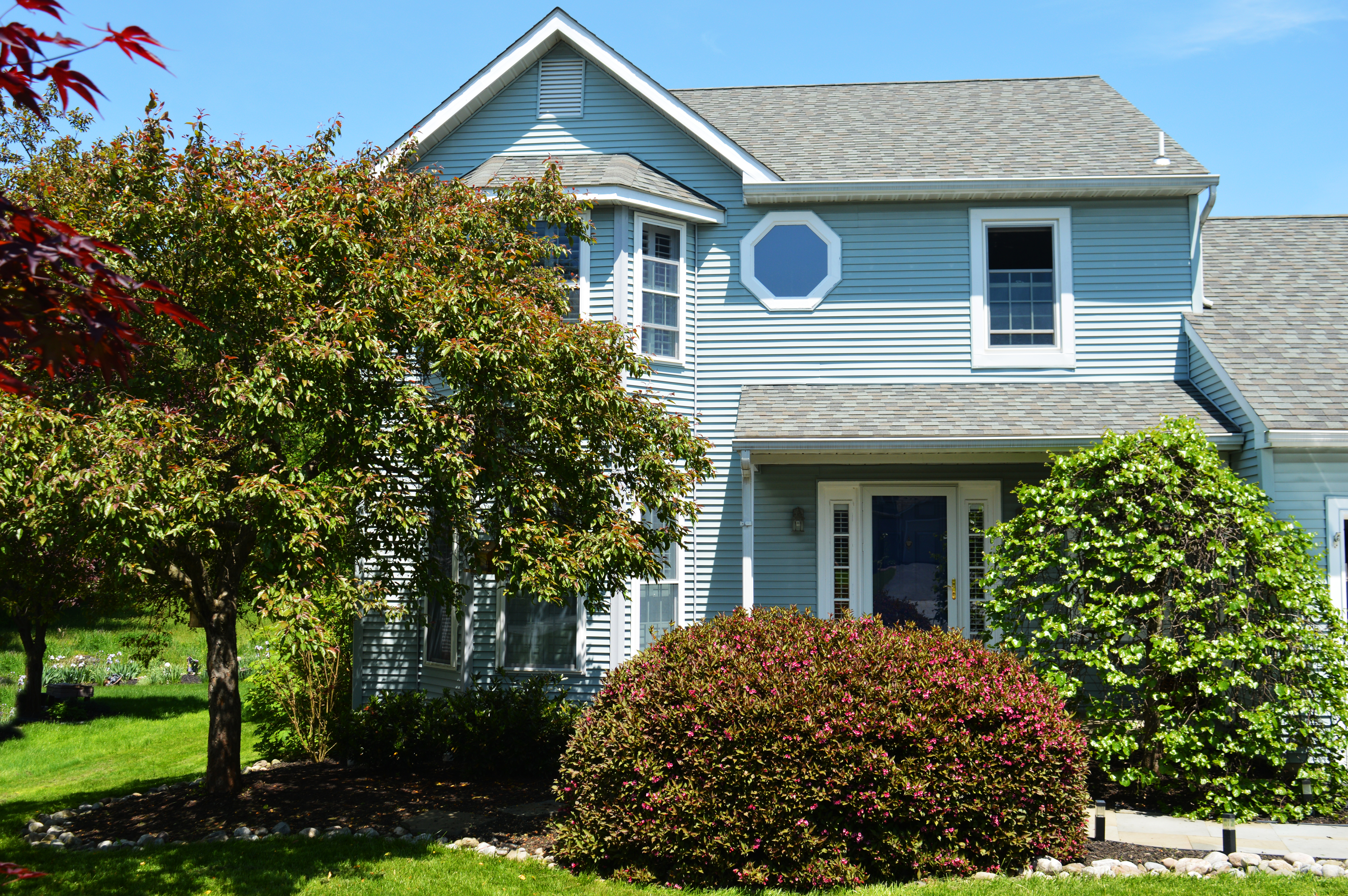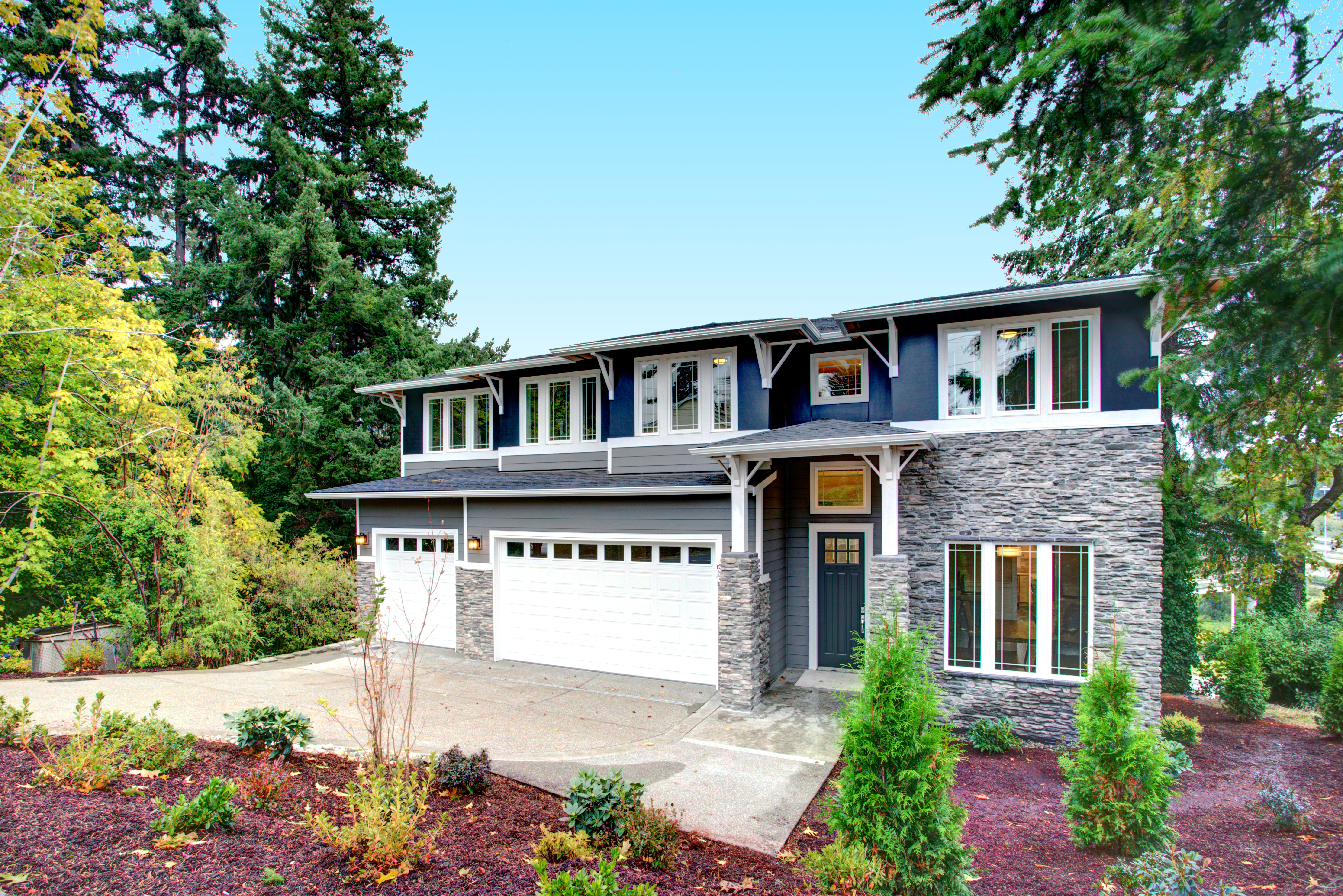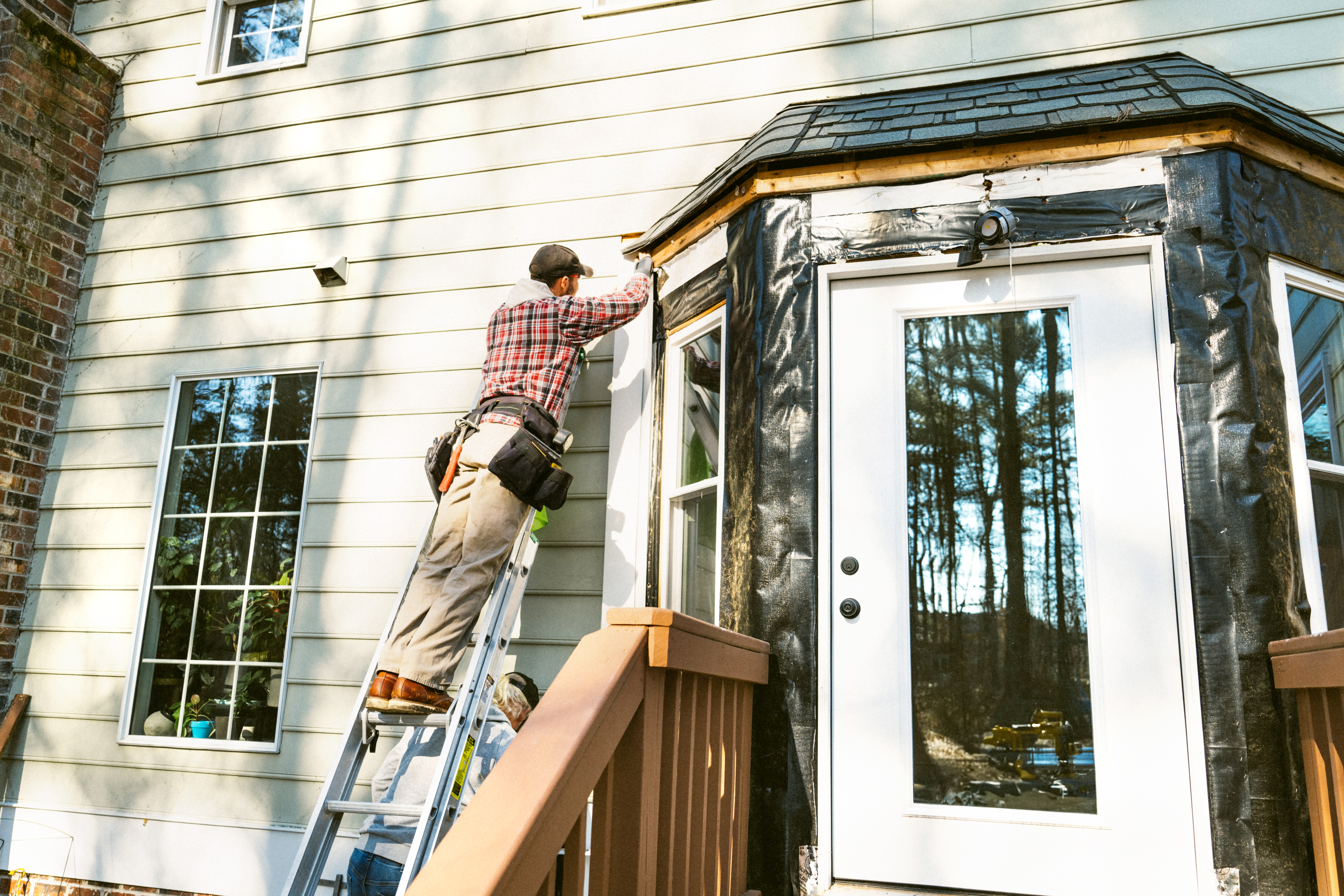
Discover the cost to install exterior trim. Learn about price factors, labor, materials, and ways to save on your exterior trim installation project.
Step to the side and let the pros handle this one


Not only is siding your home’s first line of defense against rain, snow, and other weather, but it also acts as an insulator, keeping your home cooler in summer and warmer in winter. In other words, it’s a very important part of your home’s architecture and should be installed correctly the first time—so who do you call when you need to replace or install siding?

The reality is that replacing or installing siding is a multi-day job that requires extra care and some very specific tools. In addition, it involves working on a ladder, which is a safety hazard. Rest easy and know your siding installation will be completed correctly the first time by hiring a local siding professional who knows what they are doing.
As they remove your old or damaged siding, a professional siding contractor can check your home for any underlying issues. Pests, nests, and rot can all live under and around siding in spots that are difficult for homeowners to detect on their own. Get these issues remedied right away to prevent any costly damage to your home.
Choosing the best siding material for your home and budget might feel complicated. A siding installation pro can walk you through the various options and explain why, say, it might be worth the extra cost to pay for stone siding (hint: it has a life span of 100 years).
Building permits can cost between $150 and $1,500, and many siding projects will require local and state permits. Know which ones you need and which ones you don’t by talking to someone who has completed this type of project many times.
Working on a ladder can be dangerous—a professional siding contractor will have the right equipment and experience necessary to install your siding and should carry the right insurance package to cover themselves and your home, should anything go awry. Keep yourself safe by hiring someone who knows what they’re doing.
Some local general contractors might have the skill and ability to install siding, but you’ll want to ask them about their experience and comfort level with the project. You should also confirm that they have all the tools required for the installation. When you’re reaching out to contractors to find someone to install your siding, get quotes from as many as possible—whether that includes general contractors or not.
Siding installation varies based on the architectural shape and overall size of your home, as well as the siding materials being used, but this is generally how the process works:
1. Remove any old siding that needs to be replaced—you might be installing all new siding or simply replacing a few boards.
2. Scrape away old caulking.
3. Remove any downspouts, lighting fixtures, or other objects that might get in the way of installation—your shrubs and trees will also likely be tied back.
4. Nail down a siding starter strip, then add the corner posts.
5. Nail the J-channel exterior siding trim around windows and doors.
6. Install the first siding panel, followed by the overlap joints. Due to regular expansion and contraction, sliding panels should have an extra 1/4-inch gap between them and any accessories.
7. Nail the J-channel pieces along the inner edge of the fascia to conceal any cut edges of the soffit and create a watertight seal.
8. Measure, cut, and nail down the top row of siding.
The cost of hiring a siding contractor to install your home’s siding depends on many factors, including the siding type, home size, local climate, and labor costs. Replacing or installing siding costs $11,530 on average.
Consult a professional to get an accurate estimate for the type of siding you want to install. For example, vinyl siding costs range from $6,375 to $18,250, whereas other siding options, like wood siding, are less expensive.
We recommend hiring a local siding contractor for removing, replacing, and installing new siding due to the personal safety risks associated with this task. Siding professionals have the necessary skills, tools, and experience to install siding safely and efficiently, using best ladder safety practices. Plus, hiring a siding contractor ensures that your materials are installed correctly, preventing future problems that can arise from improper DIY installation.
From average costs to expert advice, get all the answers you need to get your job done.

Discover the cost to install exterior trim. Learn about price factors, labor, materials, and ways to save on your exterior trim installation project.

New siding can boost your home value, energy efficiency, and curb appeal. Learn about the cost to install shingle siding to budget appropriately.

Mobile home skirting replacement costs come down to the material you choose and the size of your home. Use this guide to budget for your skirting project.

Not sure who to hire for stone veneer siding installation? Compare installers, learn how pros work, and choose the right expert with confidence.

This rundown of common types of metal siding will help you decide which type of metal siding is right for your home based on style, performance, and price.

Find out the true cost to install T1-11 siding on your home. Get detailed price breakdowns, installation tips, and ways to save on your siding project.